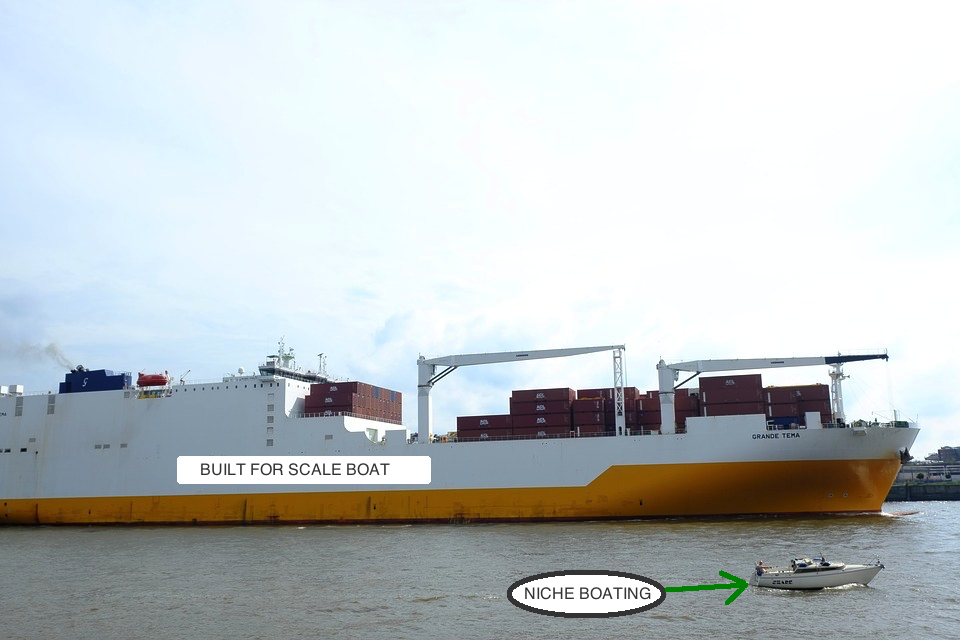In most industries, whether it be cars, jewelry, food or beverages, some products are built for scale and mass distribution, while others are niche and serve a distinct customer segment. However, some products simply aren’t meant for mass distribution, either due to the fact the product has naturally constrained production or, in the case of some products (e.g., branded retail), mass distribution would limit the good’s appeal. Most goods and services fall within the boundaries of infinite scale and uber-niche.
The ETF industry is no different.
Every ETF falls into one of those three categories:

Any business or ETF can scale, but it often comes at the expense of quality (perceived and/or real). ETFs experiencing rapid growth in niche products experience a difficult decision at some point in their life cycle: Do they punt on their niche products and go for scale (potential to maximize profits, but may hurt performance)? Or do they make the decision to remain niche (may not maximize profits, but may maintain performance)?(1)
In a previous post, I broke down all the ETF firms into divisions. We could do the same exercise here with individual ETFs: breaking all of them down into the three scale buckets above. However, given that there’s now approximately 2000 ETFs, this effort would be 1) a ton of work and 2) not that helpful for investors. Instead, I’m going to walk through the problems managers face so reader’s have the necessary educational toolkit to judge the scalability of any ETF that may come down the pipe — now or in the future.(2)
The 1964 Supreme court case of Jacobellis v Ohio was to determine whether something is an obscenity or not (largely relating to pornography). United States Supreme Court Justice Potter Stewart was famously quoted as saying, “I know it when I see it.” Likewise, by the end of this post, you should be able to know the scale potential of various ETF strategies when you see them.
Let’s break this down.
Why Fund Managers Run into Scale Issues — Liquidity Problems
For active or passive fund managers, either in the mutual funds and/or exchange traded fund format, there can be scalability issues.When you’re managing $200 million, perhaps an investment strategy is able to generate outperformance. However, once assets begin flowing into a fund, it might be becomes more and more difficult for the manager to maintain the prior outperformance for a host of reasons.
Let’s use a simple example to illustrate:
Say ABC Asset Management has a strategy that has demonstrated outperformance. The strategy involves a 10 stock portfolio and all of the stocks in the portfolio have a $100 million market-cap– a $1 billion market-cap combined. Also assume that each stock trades 5% of its market cap per day, so $50 million notional trading volume in total for the combined portfolio.
What happens if the fund reaches $500 million in assets under management? You now own 50% of the combined market-cap! Also, if you traded $50 million in the fund, you would be using up the entire average daily liquidity.
Is this strategy going to continue work?
Not likely. Trading impact pressure from the fund manager will drive the prices of the individual companies up very quickly (perhaps higher than they are actually worth). Clearly, liquidity matters, especially for smaller, more concentrated portfolio strategies.
How Asset Managers Can Increase the Scalability of Their Funds
Faced with the problem outlined above, the asset manager would have two options:
This option sometimes comes into play and highlights why investors see small and mid-cap managers closed down to new investors.(3)













Leave A Comment